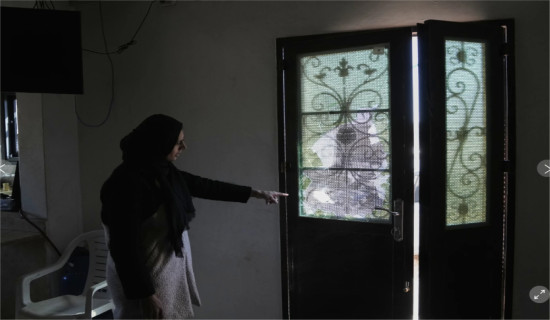- Wednesday, 24 December 2025
Rain Replenishment
Dixya Poudel
The recent deluge of torrential rain has unsettled the nation, as monsoon season marked its advent. What was a much required respite from heat swiftly turned into havoc, as rivers inundated the shores.
In Nepal, the rainy season is a relief from the scorching weather. Particularly, farmers rejoice in this season as it facilitates paddy cultivation and growth. Farmers plant rice annually in monsoon and rely on the timely arrival of precipitation for a good harvest. Crops like rice require heavy rainfall which is why they are planted on the months of June and July when the monsoon is at its height. Rainwater doesn’t just soak the fields, it also replenishes groundwater levels and reservoirs. Due to its significance, the arrival of monsoon is observed with jovial rituals and festivals. Ropain Diwas or National Paddy Day is celebrated each year around late-June (15th Asad) as farmers pray for a prosperous harvest come winter.
Monsoons are seasonal winds characterised by a shift in wind patterns which are created due to the differential heat of the sea and lands. In South East Asian nations like Nepal, summer monsoons occur annually bringing with them heavy precipitations. They are the nature’s way of ensuring growth of plants and vegetation as they replenish drought prone areas and reduce heat waves. This season is sort of quixotic as well since the rain splashing and pattering on the streets, on rooftops and over green leafy vegetation and brightly coloured flowers are a sight to sore eyes. People rejoice in the rain especially when it is drizzling as they can cosy up with a book and a cup of tea or coffee while raindrops patter on the windows.
However, as recently seen there are challenges of monsoon season as well. It tends to aggravate and even induce natural disasters. Natural disasters are a calamitous event that causes a destruction of lives and properties on a large scale such as floods, landslides, cyclones, avalanches, etc. As a result, normal lives are disrupted with severe damage to infrastructures. In Nepal, it means obstructed highways, loss of lives and sweeping of houses, lands and cattle due to floods and landslides.
One of the most disaster prone regions of South East Asia, Nepal is impacted by natural disasters each monsoon. Escalating climate change doesn’t help either. It necessitates better preventive measures such as effective weather forecasting system and adequate disaster management policies, particularly in disaster susceptible regions. Focus has to be on poor and impoverished people who are the most vulnerable to natural disasters as they live in disaster prone areas and have little resources to get back on their feet in the aftermath of natural calamities.
As such, the latest burst of torrential rainfall alarmed the nation leaving people to wonder if the rain would let up. In cities such as Kathmandu, streets near the river banks flooded. Pedestrians armed with umbrellas and raincoats braved the rain as puddles formed on roads. Despite bringing relief from the sweltering heat, the ongoing monsoon is also wrecking lives and properties throughout the country due to flash floods and landslides. Like each year, this monsoon season too has brought to light its challenges which call for a better disaster risk management in Nepal.

















